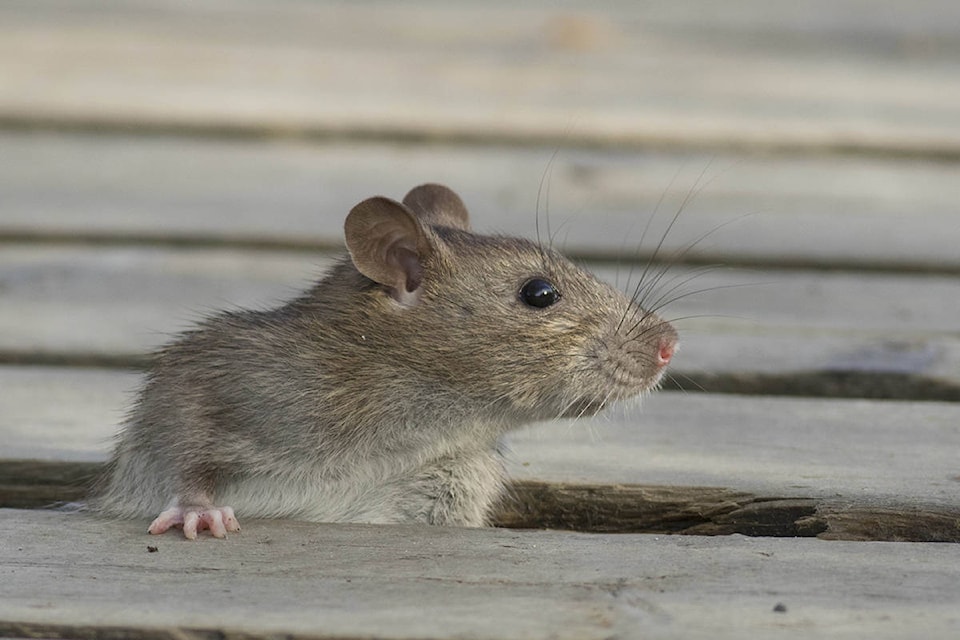Submitted by Rosie Wijenberg
The rat problem in the Creston area continues to grow. Backyard compost, fruit and unsecured garbage are all providing food sources for the growing population. Rats can spread bacteria that cause disease in humans such as pneumonia, salmonella, rat-bite fever and a variety of lesser-known illnesses. The rat can also be a nuisance as it gnaws holes to get into buildings, causing damage. It also digs into gardens to get fruit, vegetables and even flower bulbs.
With a gestation period of three weeks and reaching sexual maturity in five weeks, a pair of rats can reproduce exponentially, creating up to a thousand or more descendants in a year. This makes eradication very difficult if a community is not also managing attractants and food sources helping to avoid exponential population growth.
Keep garbage secure, never put it out at night, and always use a rodent-proof container when putting it on the curb. Don’t leave pet food outside and don’t have a bird feeder, especially the type that distributes seeds. Manage compost by turning it regularly, adding dry grass or leaves, and buy or build a composter that does not allow rodents to access the contents. Pick fruit both off the tree and off the ground. If you have rats, work with your neighbours to manage attractants in your neighbourhood.
Make sure you seal up any holes into your house using wire mesh and expanding foam. Rats and mice can gnaw through expanding foam used alone. Rats can squeeze through holes as small as a toonie.
Trapping rats on its own is not a solution to the underlying conditions that gave rise to the rat population in the first place. Food attractant management should be addressed. If you still need to trap rats it is important that the trap be sufficiently strong to deliver a quick, killing blow to the animal and that the trap is set in such a way as to minimize the accidental trapping of other animals. Healthlink BC has some good solid information on trapping procedures and the safe handling and disposal of the dead animal. Trish Drinkle has started a local initiative with the Creston Rat Patrol, focusing on community solutions, looking for resident feedback and offering both eradication and attractant management solutions.
If you see or catch a rat, please take a photograph and send it along with any information you can provide to me by email: selkirkpurcell@wildsafebc.com or call 250-551-7435. The information will be used to create a database of the distribution throughout the town and beyond, which will help us better understand where our educational services are needed.
WildSafeBC rat information can be found at https://wildsafebc.com/rats.
If you are experiencing a conflict with wildlife please call the Conservation Officer Service, RAPP Line at 1-877-952-7277.
Rosie Wijenberg is the Selkirk-Purcell WildSafeBC co-ordinator
Like us on Facebook and follow us on Twitter
